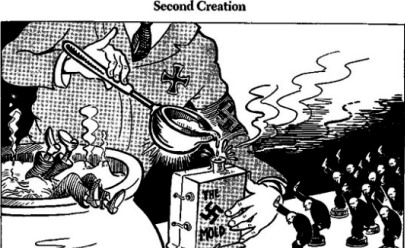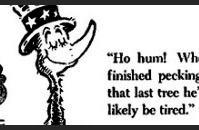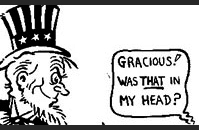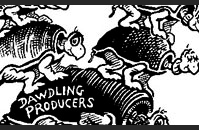DR. SEUSS AT A GLANCE:

Image Gallery
Dr. Seuss (Theodor Seuss Geisel)
Theodor Seuss Geisel was born in Springfield, Massachusetts on March 2, 1904. He was the second child of a successful German-American family. His family ran a successful brewery until Prohibition closed it down and his father then worked for the city’s public park system. He had, by all accounts, a relatively happy childhood, attending the local Lutheran Church and selling war bonds for the Boy Scouts during WWI. He was the brunt of instances of anti-German bullying (especially during WWI) which impacted his work greatly.
After he graduated from the local high school, he attended Dartmouth College, graduating in 1925. He spent a great deal of his time writing for the college’s humor magazine. While the editor of the magazine he was caught in his room drinking bootleg gin (it was prohibition after all!) and was banned from further involvement in the magazine. In order to continue writing for the magazine, he needed an alias, and he used his middle name. It was then that “Seuss” was created. He added the “Dr.” part later in his writing career.
Thinking that he might want to become a literature professor, he left to study at Oxford. While there he spent more time traveling and doodling then studying and decided the academic life was not for him. While there he met his first wife, Helen Palmer and he decided to try to make a living as an artist. He moved to New York with Helen and started writing (and illustrating) for Judge and the Saturday Evening Post. One of the cartoons he created included Flit (a popular insecticide) which caught the eye of Standard Oil who hired him to write (and draw) advertisements for them. This led to a long career as an advertising artist for several companies. This salary also gave him the opportunity to travel and write.
In the late 30s, Geisel began writing children’s books. The first published was And to Think I Saw it on Mulberry Street (Geisel said the book was rejected 27 times) and he continued to write children’s books until it looked as if war loomed for America. Geisel found he could no longer write books for children, he needed to make America aware of the dangers from abroad (fascism and the Axis powers) and at home (isolationism and prejudice).
From 1941 to 1943 Geisel created more than 400 political cartoons for PM Newspaper in New York—tackling such subjects as racial discrimination, the dangers of isolationism, social injustice and anti-Semitism, political machinations, the war effort, and political leadership. In 1943 he joined the Army and worked for the Information and Education Division where he created the character Private Snafu-who taught by negative example. He also wrote “Your job in Germany,” a propaganda film about peace in Germany and “Design for Death,” a movie study of Japanese culture.
After the war, Geisel returned to writing children’s books and produced some of his most famous and beloved titles—The Cat in the Hat, Horton Hears a Who!, The Grinch Stole Christmas and many others. His books continued to teach important lessons and touch on important social issues. He lived in La Jolla, California after the war with his second wife and died on September 24, 1991.
Download a printable version of this At A Glance
TAKE ACTION:


EDUCATION PROJECTS:
Student Travel – WWII Educational Tours
High school and college students, learn the leadership principles that helped win WWII on a trip to France or during a weeklong residential program in New Orleans. College credit is available, and space is limited.
See You Next Year! HS Yearbooks from WWII
Collected from across the United States, the words and pictures of these yearbooks present a new opportunity to experience the many challenges, setbacks and triumphs of the war through the eyes of America’s youth.
The Victory Gardens of WWII
Visit the Classroom Victory Garden Project website to learn about food production during WWII, find lesson plans and activities for elementary students, get tips for starting your own garden and try out simple Victory Garden recipes!
The Science and Technology of WWII
Visit our new interactive website to learn about wartime technical and scientific advances that forever changed our world. Incorporates STEM principles to use in the classroom.
Kids Corner: Fun and Games!
Make your own propaganda posters, test your memory, solve puzzles and more! Learn about World War II and have fun at the same time.






